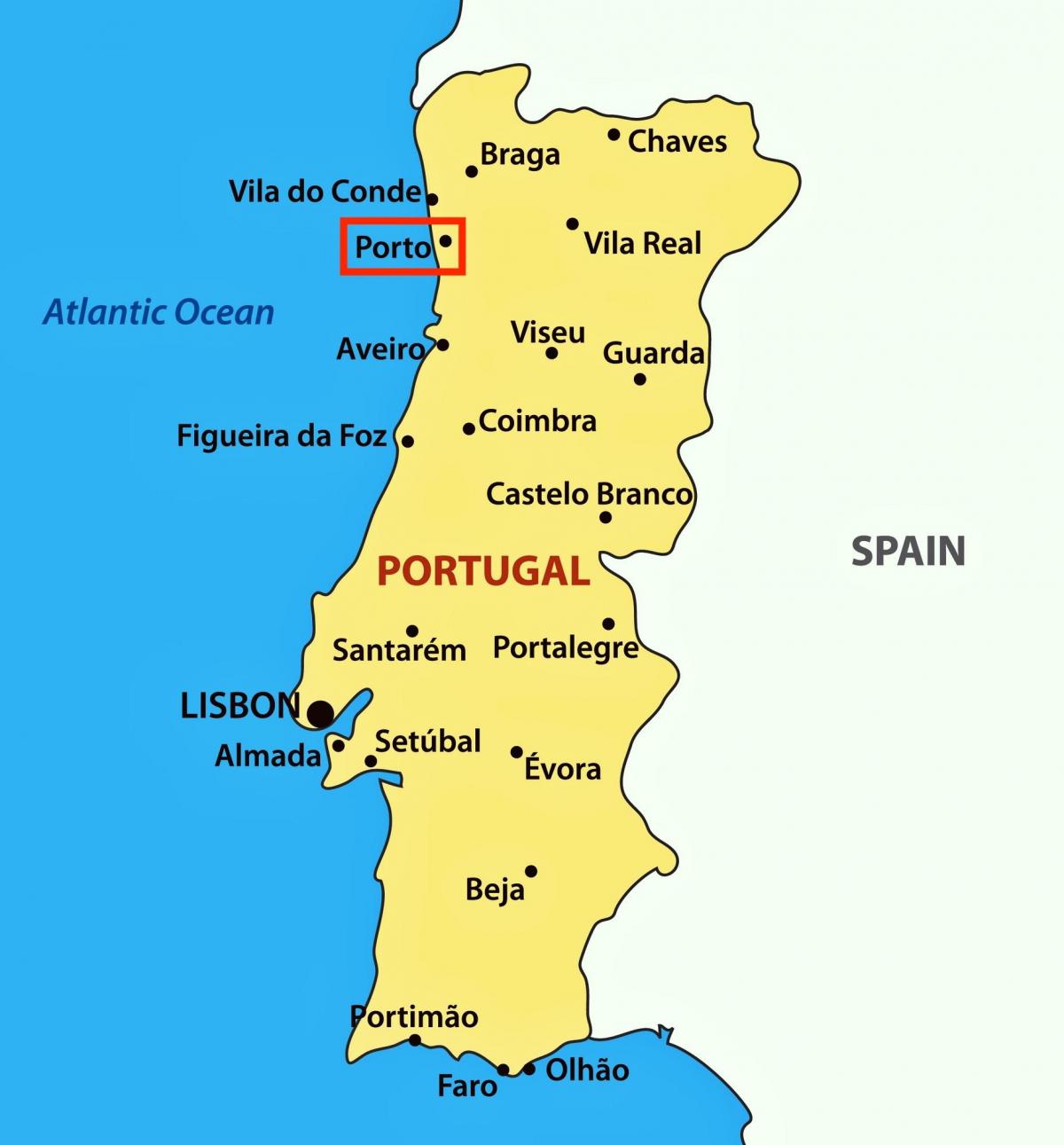search
Porto Portugal map
Porto on map of Portugal. Porto Portugal map (Southern Europe - Europe) to print. Porto Portugal map (Southern Europe - Europe) to download. Porto (Portuguese pronunciation: [ˈpoɾtu]), also known as Oporto in English, is the second largest city in Portugal, after Lisbon, and one of the major urban areas in Southern Europe. Its administrative limits (an area of 41.66 km²/16 sq.mi) include a population of 237,584 (2011) inhabitants distributed within 15 civil parishes. The urbanized area of Porto, which extends beyond the administrative limits of the city, has a population of 1.3 million (2011) in an area of 389 km2 (150 sq mi), making it the second-largest urban area in Portugal as you can see in Porto Portugal map. The Porto Metropolitan Area includes approximately 1.7 million people, and is recognized as a Gamma-level global city by the Globalization and World Cities (GaWC) Study Group, being one of the four cities in the peninsula with global city status (the others being Madrid, Barcelona and Lisbon).
Located along the Douro river estuary in northern Portugal, Porto is one of the oldest European centres, and registered as a World Heritage Site by UNESCO in 1996. Its settlement dates back many centuries, when it was an outpost of the Roman Empire. Its Latin name, Portus Cale, has been referred to as the origin for the name "Portugal," based on transliteration and oral evolution from Latin. In Portuguese the name of the city is spelled with a definite article as "o Porto" (English: the port). Consequently, its English name evolved from a misinterpretation of the oral pronunciation and referred to as "Oporto" in modern literature and by many speakers. One of Portugal internationally famous exports, port wine, is named for Porto, since the metropolitan area, and in particular the adegas of Vila Nova de Gaia as its shown in Porto Portugal map, were responsible for the production and export of the fortified wine.
In recent years, UNESCO recognised Porto historic centre as a World Heritage Site. Among the architectural highlights of the city, Oporto Cathedral is the oldest surviving structure, together with the small romanesque Church of Cedofeita, the gothic Igreja de São Francisco (Church of Saint Francis), the remnants of the city walls and a few 15th-century houses. The baroque style as its mentioned in Porto Portugal map is well represented in the city in the elaborate gilt work interior decoration of the churches of St. Francis and St. Claire (Santa Clara), the churches of Mercy (Misericórida) and of the Clerics (Igreja dos Clérigos), the Episcopal Palace of Porto, and others. Also there are interesting monuments to the landscape of the city, like the magnificent Stock Exchange Palace (Palácio da Bolsa), the Hospital of Saint Anthony, the Municipality, the buildings in the Liberdade Square and theAvenida dos Aliados, the tile-adorned São Bento Train Station and the gardens of the Crystal Palace (Palácio de Cristal).


